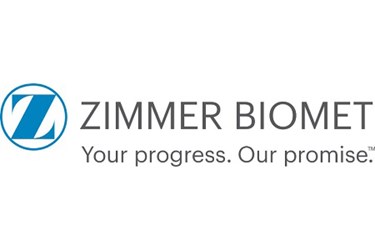FDA Clears Zimmer Biomet's 3D-Printed Foot And Ankle Implant

Zimmer Biomet has received clearance from the FDA to launch its Unite3D Bridge Fixation System, 3D-printed technology to be used in joint fusion therapy of the foot and ankle. Zimmer Biomet claims the all-in-one technology offers better stability and biological incorporation than currently used plates and screws.
Foot and ankle arthrodesis is considered for patients suffering joint paint that is unalleviated by less invasive methods, such as steroid injections, pain medication, or specialty braces or shoes. According to the American Foot and Ankle Orthopedic Society (AFAO), surgeons perform arthrodesis by removing any remaining cartilage and fastening the bones together with plates and screws. Sometimes a bone graft is added to encourage fusion.
The Unite3D System, by comparison, uses porous metal technology called OsseoTi that mimics the architecture of the bone and includes an osteoconductive matrix designed to encourage osseointegration. According to a Zimmer Biomet press release, using one piece of metal — rather than several — offers greater rigidity and stability, as well as uniform compression as the patient moves. To address a variety of clinical needs, the company will be commercializing the implant in nine different size options, each of which come with single-use surgical instrumentation.
To design the Unite3D system, Zimmer Biomet collaborated with prominent orthopedic surgeons Greg Pomeroy of the New England Foot and Ankle Specialists and John Early from Texas Orthopedic Associates. According to Early, the system provides a more streamlined approach to joint fusion that encourages biological incorporation across the entire length of the implant.
“By offering foot and ankle surgeons a construct for osseointegration across the entire fusion site, the Unite3D Bridge Fixation System provides a stable and durable solution for facture and osteotomy fixation and joint arthrodesis within the midfoot and hindfoot,” Early said. “Having replaced the plates, screws and surgical staples of traditional foot and ankle fusion, we also wanted to offer the intraoperative benefits of a streamlined procedure with easy-to-use and disposable surgical instruments.”
Ben Joseph, GM of foot and ankle at Zimmer Biomet, said the system was only the latest contribution to the company’s “robust innovation pipeline,” which aims to expand Zimmer Biomet’s presence in “every category of musculoskeletal healthcare”, including foot and ankle.
When Zimmer acquired Biomet for $14 billion last June, the combined companies became an innovation leader in the $45 billion musculoskeletal healthcare market, said Becker’s Spine Review.
In an earnings call last month, Zimmer Biomet announced that net sales in the Americas were up 41.2 percent in 2015 at $3.6 billion, and up 28.3 percent globally at $5.9 billion.
“In the second half of 2015, we over-delivered against our initial net synergy targets, further validating our confidence and the effectiveness and accretive value of our combined organization,” said Zimmer Biomet CEO David Dvorak.
